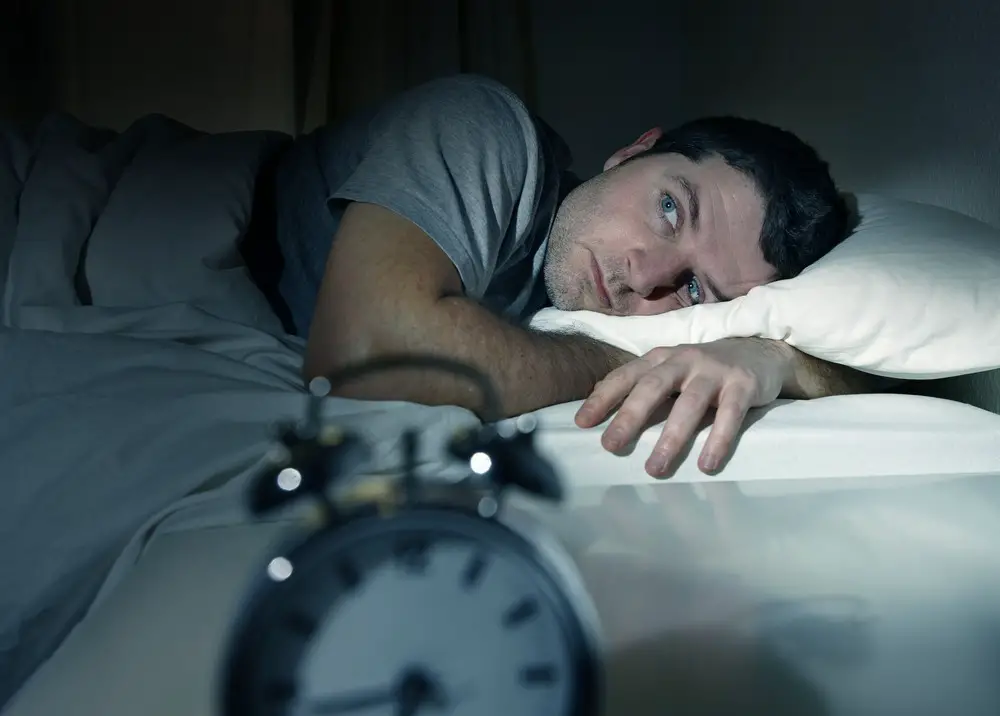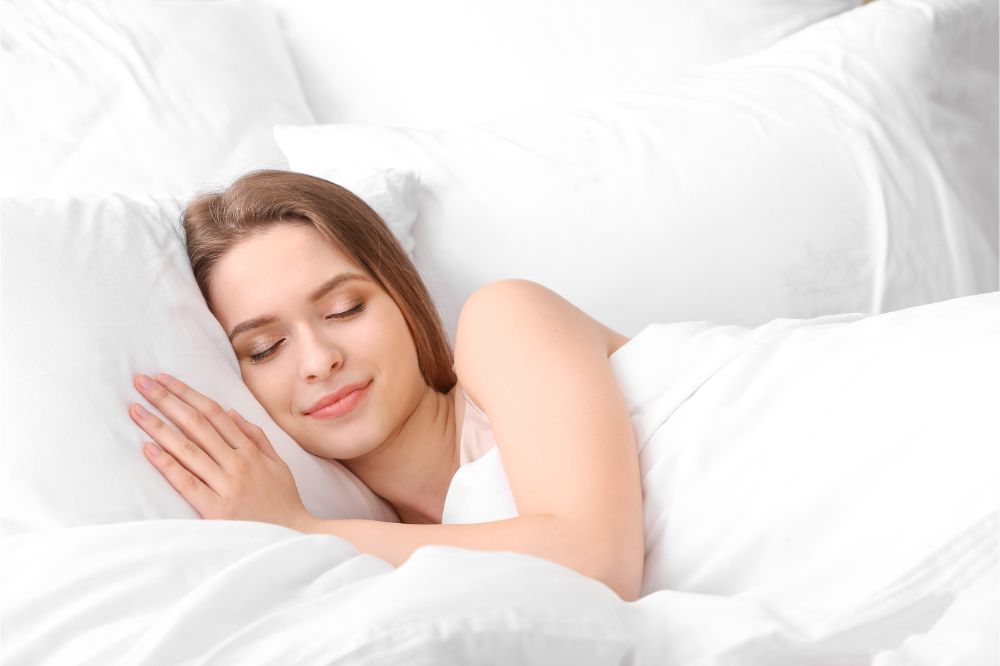As a BetterHelp affiliate, we receive compensation from BetterHelp if you purchase products or services through the links provided
Sleep apnea is a common sleep disorder, affecting many individuals worldwide. Often, it is associated with snoring; however, it is essential to understand that you can still have sleep apnea without snoring. Obstructive sleep apnea (OSA) and central sleep apnea (CSA) are two main types, and both can lead to serious health issues when left untreated.
Although snoring is a well-known symptom of sleep apnea, it is not the only one to consider. Other indicators, such as fatigue, daytime sleepiness, mood swings, and lack of focus, are also essential to recognize. By understanding the signs and symptoms and being aware of the risk factors, you can seek the proper help and treatment if you suspect you have sleep apnea, even without snoring.
Key Takeaways
- Sleep apnea can occur without snoring, and awareness of other symptoms is crucial.
- There are two main types of sleep apnea: obstructive sleep apnea and central sleep apnea.
- Proper diagnosis and treatment are essential to prevent further complications and improve quality of life.
 Understanding Sleep Apnea
Understanding Sleep Apnea
Sleep apnea is a common sleep disorder that affects many individuals. As a person suffering from sleep apnea, you may not even be aware that you have it. In this section, we will explore the three main types of sleep apnea to help you understand it better.
Obstructive Sleep Apnea
Obstructive Sleep Apnea (OSA) is the most common type of sleep apnea. It occurs when the throat muscles relax and block your airway, causing interruptions in your breathing while you sleep. The leading cause of OSA is obesity, which can result in the muscles in the back of the throat losing their tone, leading to an upper airway collapse. This can cause loud snoring as your tissues vibrate when air is forced through your narrow airway.
Key takeaway: OSA is common among those who are obese and results from relaxed throat muscles blocking the airway during sleep.
Central Sleep Apnea
Central Sleep Apnea (CSA) is a less common type of sleep apnea caused by a central nervous system malfunction. Unlike OSA, CSA is not caused by a physical blockage in the airway. Instead, the brain fails to signal properly to the muscles that control your breathing. This leads to moments when your body doesn’t attempt to breathe at all during sleep. CSA is commonly found in individuals with underlying medical issues, such as heart or kidney failure, stroke, or neurological disorders.
Key takeaway: CSA is caused by a central nervous system malfunction rather than a physical airway blockage and is usually associated with other medical conditions.
Treatment-Emergent Central Sleep Apnea
Treatment-Emergent Central Sleep Apnea, also known as Complex Sleep Apnea, is a combination of both OSA and CSA. It occurs when a person with obstructive sleep apnea receives treatment, such as continuous positive airway pressure (CPAP) therapy, but still experiences central sleep apnea events. This might be due to the person’s brain not yet adjusting to the new breathing rhythm provided by the treatment. Over time, these events usually decrease as the individual adjusts to the therapy.
Key takeaway: Treatment-Emergent Central Sleep Apnea occurs when a person with OSA receives treatment but still experiences CSA events and often improves over time.
Understanding these types of sleep apnea is crucial to seeking the appropriate treatment and improving your sleep quality. Remember, when in doubt, it’s essential to consult a sleep medicine professional, as they can provide you with personalized guidance and treatment plans tailored to your specific needs.
The Role of Snoring
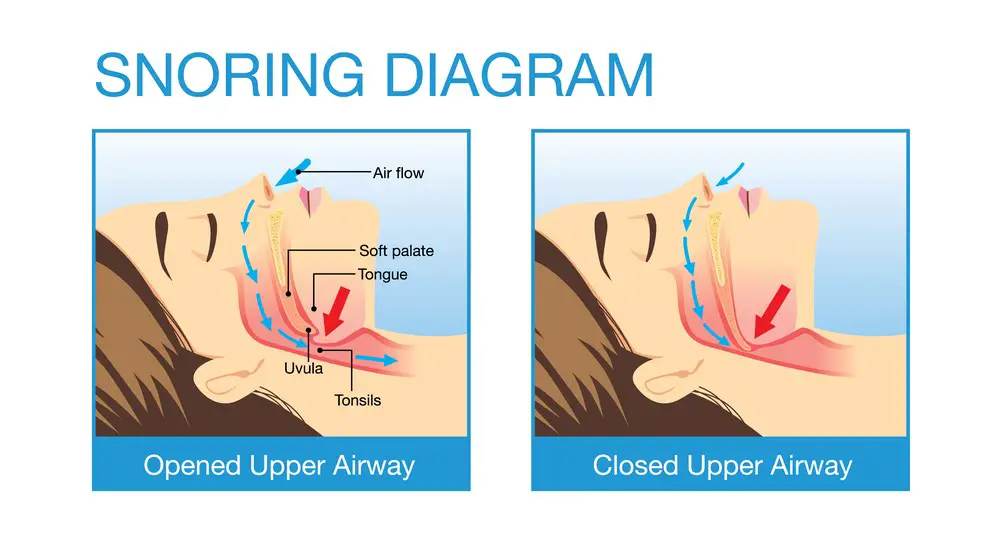
Loud Snoring
You’ve probably heard people snoring loudly – sometimes, it may sound like a chainsaw in the middle of the night. Snoring occurs when air can’t flow freely through the mouth and nose during sleep. This causes the surrounding tissues to vibrate, creating the familiar snorting and snoring sounds. Did you know that loud snoring is often linked to sleep apnea?
Sleep apnea is a sleep disorder where breathing repeatedly stops and starts during the night. The most common form, known as obstructive sleep apnea (OSA), occurs when throat muscles relax and block your airway, affecting sleep quality. So, if you’re a loud snorer, could sleep apnea be the reason behind it?
Although not everyone who snores has sleep apnea, most people with OSA do snore loudly. It’s important to pay attention to other symptoms, such as feeling tired even after a full night’s sleep, waking up gasping for air or experiencing morning headaches. If you identify with these symptoms, consulting a medical professional is the best way to ensure proper diagnosis and treatment.
Key Takeaway: Loud snoring can indicate sleep apnea, but looking for additional symptoms is essential before jumping to conclusions.
Sleep Apnea Without Snoring
Now, you might wonder if someone has sleep apnea without snoring. The answer is yes. However, snoring is considered one of the most common side effects of sleep apnea, not everyone who has sleep apnea snores.
There is a less common form of sleep apnea called central sleep apnea (CSA). This type affects less than 1% of adults and occurs when the brain fails to send proper signals to the muscles responsible for controlling breathing, leading to pauses in breath during sleep. People with CSA may not necessarily snore.
So, how can you identify sleep apnea if there’s no snoring involved? Some symptoms to watch for include excessive daytime sleepiness, mood changes, difficulty concentrating, or episodes of waking up short of breath. If you notice any of these signs without snoring, it’s essential to consult with a healthcare provider to receive a proper evaluation.
Key Takeaway: Sleep apnea can occur without snoring, particularly in cases of central sleep apnea. Look for other symptoms to identify the presence of sleep apnea in the absence of snoring.
Signs and Symptoms
If you’re concerned about sleep apnea without snoring, paying attention to other signs and symptoms is essential. Here are some key indicators:
- Morning headaches: Waking up with headaches, especially in the morning, could point to sleep apnea. These headaches may stem from the inadequate oxygen supply to your brain during sleep.
- Insomnia: Sleep apnea might be the reason behind your difficulty staying asleep. Frequent awakenings during the night can leave you feeling unrested in the morning.
- Daytime drowsiness and fatigue: Sleep apnea can cause interrupted sleep, leading to feelings of daytime sleepiness, drowsiness, and fatigue. You may find it challenging to stay awake during work or daily activities.
- Dry mouth: Sleep apnea often causes people to breathe through their mouths. This can lead to a dry mouth when you wake up, contributing to bad breath.
- Mood changes and irritability: Inadequate sleep can result in mood changes, irritability, and even depression. If you snapping at loved ones without reason, it could be sleep apnea.
Monitoring these symptoms and consulting a healthcare professional for an accurate diagnosis and potential treatment options is crucial. Remember, sleep apnea can have severe consequences for your overall health if left untreated, so don’t hesitate to seek help if you notice any of these signs. Stay proactive, and take charge of your well-being!
Causes and Risk Factors
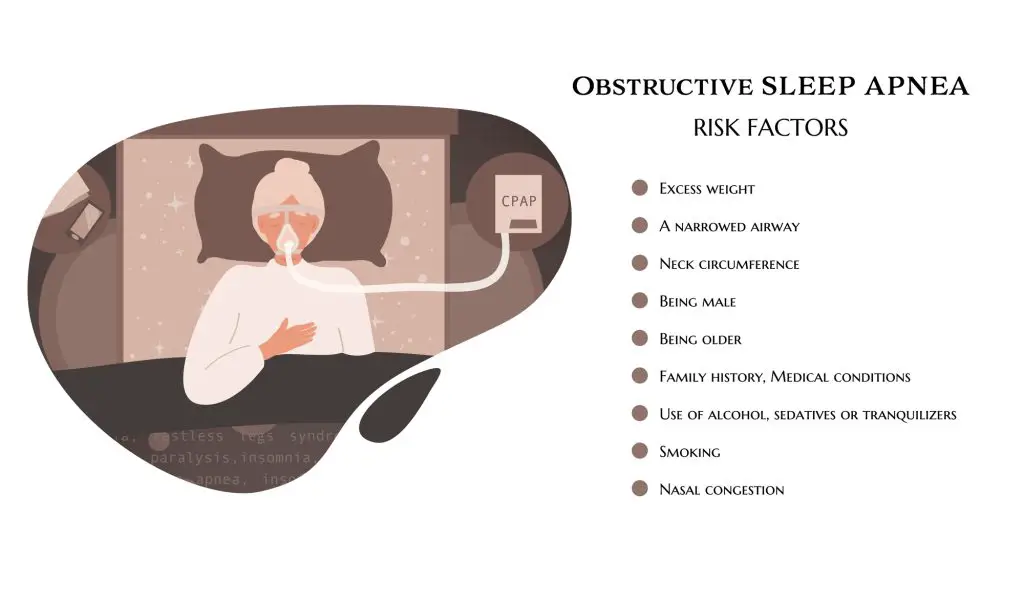
There are a variety of factors that contribute to the development of sleep apnea without snoring. Understanding these factors can help you manage your condition and reduce the risk of complications. Let’s explore some primary factors that can lead to sleep apnea without snoring.
Physical Factors
- Obesity and excess weight: Extra weight, particularly around the neck and upper airway, can restrict proper airflow and lead to sleep apnea.
- Men and women: Men are more likely to develop sleep apnea, significantly if overweight. Women’s risk increases during and after menopause.
- Aging: As we age, we may experience a reduced muscle tone, resulting in a narrower or less stable airway, increasing the risk of sleep apnea.
Lifestyle Factors
- Alcohol: Drinking alcohol, especially before bed, can relax the airway muscles, making it easier for them to collapse and block airflow.
- Smoking: Smoking can cause inflammation in the upper airway, making it more difficult for air to flow freely.
Health and Medical Factors
- Medical conditions: Health issues such as diabetes and heart conditions can increase the risk of sleep apnea.
- High blood pressure: Sleep apnea and high blood pressure often co-exist, and untreated sleep apnea can worsen blood pressure.
- Family history: If you have a close relative with sleep apnea, genetics may make you more likely to develop the condition.
Understanding the causes and risk factors of sleep apnea without snoring can help you make informed decisions about your lifestyle and health. Discussing your concerns with a healthcare professional to receive the appropriate guidance and intervention for your specific situation is essential.
Complications and Consequences
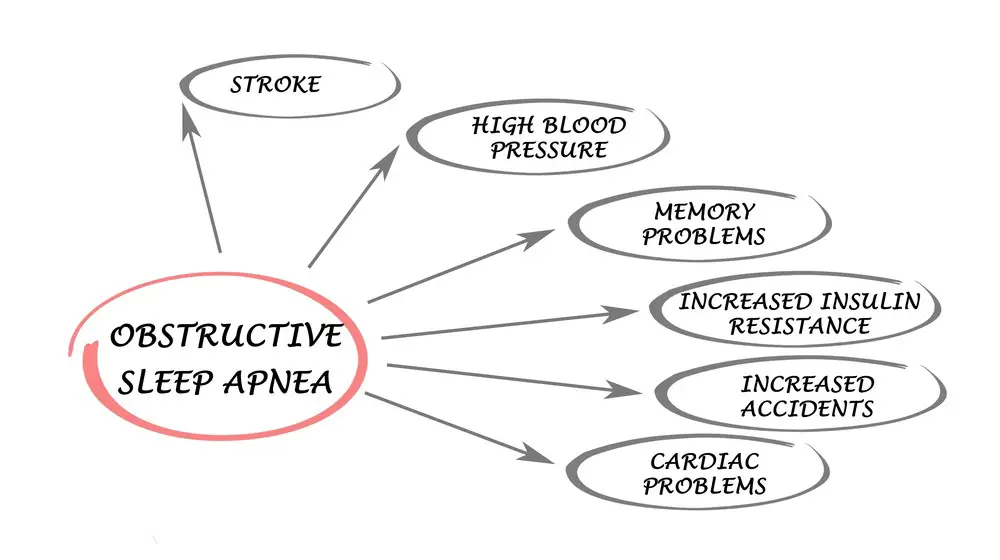
Sleep apnea, even without snoring, can lead to complications and consequences for your physical and mental health. Let’s discuss some of the main concerns about poor sleep quality due to sleep apnea.
First and foremost, sleep apnea increases the risk of severe health issues, such as stroke and type 2 diabetes. This is primarily due to the commonality of obesity in sleep apnea patients, significantly amplifying the risk for these complications. It’s crucial to watch for any symptoms and seek professional help if you suspect you have sleep apnea.
Another potential consequence of sleep apnea is worsening headaches, especially in the morning. As your brain struggles to get the rest it needs, it might trigger headaches as a response. If you consistently wake up with headaches, it could be a sign that sleep is disrupted by sleep apnea.
The impact of sleep apnea on your mental health should not be underestimated, either. Poor sleep is often linked to depression and difficulty focusing and paying attention during the day. This can significantly affect your overall quality of life, work or school performance, and interpersonal relationships.
Here are some additional complications and consequences to consider:
- Excessive daytime sleepiness
- Difficulty staying asleep (insomnia)
- Irritability
- Waking up with a dry mouth or sore throat
- Trouble focusing during the day
It’s important to remember that, although these complications and consequences can be quite severe, there are ways to manage and treat your sleep apnea effectively. By working closely with your healthcare team and making necessary lifestyle adjustments, you can improve your sleep quality and reduce the impact of sleep apnea on your overall well-being.
Diagnosis and Detection
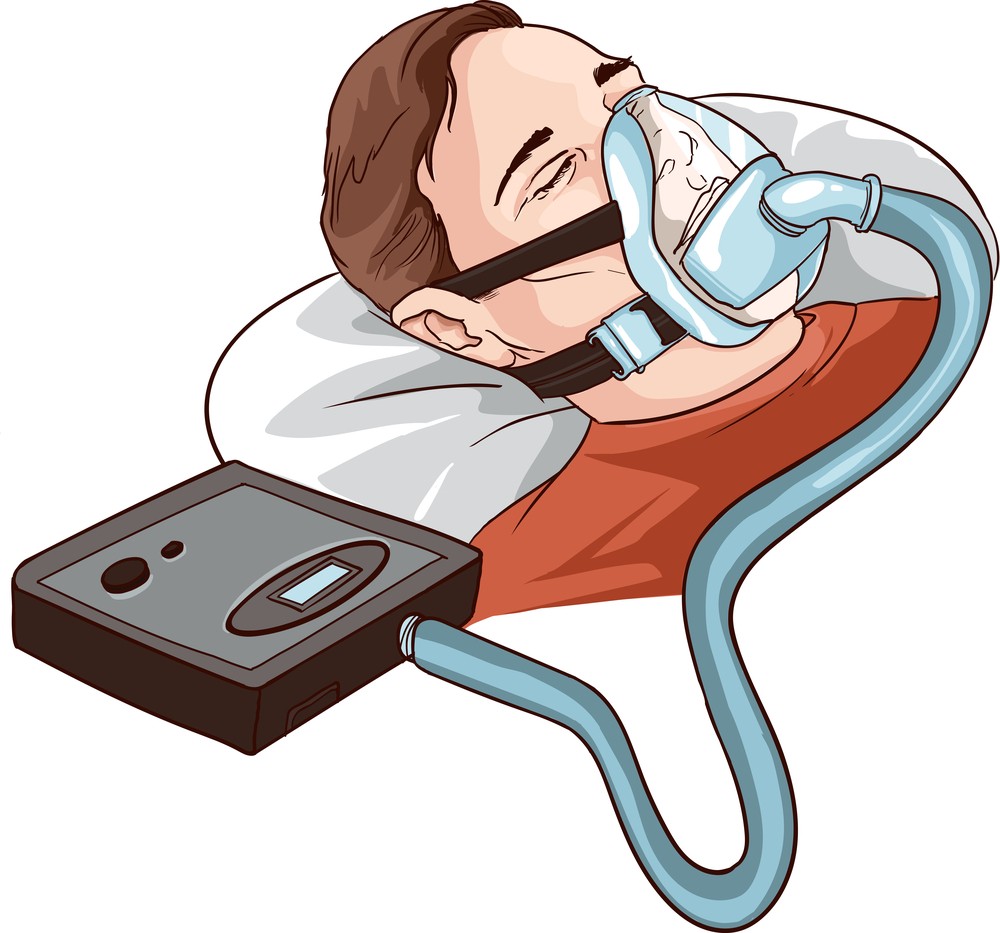
Sleep apnea without snoring can be challenging to diagnose. However, there are multiple ways to detect and diagnose sleep apnea based on various symptoms and tests.
Sleep Study
A sleep study, or polysomnogram, is a comprehensive test used to diagnose sleep apnea. It records your brain waves, heart rate, and various other factors while you sleep. This test can be conducted at a sleep center or through an at-home sleep test kit. In both instances, the sleep study measures:
- Respiratory activity: breathing patterns and chest motion
- Heart rate and blood oxygen level
- Actigraphy: nocturnal movement and motor activity
These metrics help determine whether you have sleep apnea and the severity of your condition.
Consulting a Specialist
If you suspect you might have sleep apnea, it’s necessary to consult a specialist for an accurate diagnosis. Generally, you can consult your primary care doctor, who can refer you to a sleep medicine specialist if necessary.
A sleep medicine specialist is an expert in sleep disorders and can help:
- Identify the specific type of sleep apnea, such as central or obstructive sleep apnea
- Determine the best course of action for treatment
- Provide tailored solutions to improve your sleep quality and overall health
During your consultation, the specialist may ask about your symptoms medical history, and conduct a physical examination to gather the necessary information for a diagnosis.
Successfully diagnosing sleep apnea without snoring can be difficult, but early detection and treatment can significantly improve your quality of life. So, if you suspect you may have sleep apnea, don’t hesitate to consult a specialist for proper evaluation and treatment options.
Treatment Options
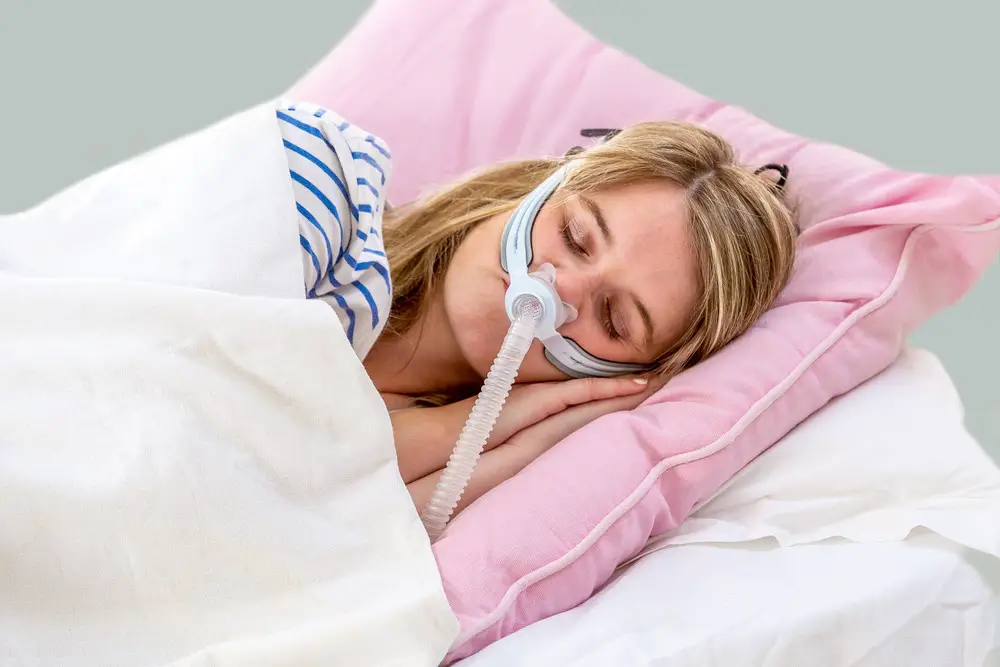
CPAP Therapy
One of the most common treatments for sleep apnea is continuous positive airway pressure (CPAP) therapy. This involves wearing a mask over the nose and mouth while you sleep. The CPAP machine delivers a steady air flow to keep your airway open and prevent apneas. Although CPAP is generally more effective for those with snoring-related sleep apnea, it can also be an excellent solution for those without snoring. Remember to clean your equipment regularly and communicate with your doctor about any concerns.
Surgery
Surgery might sometimes be recommended to treat sleep apnea without snoring. The surgical procedure aims to remove or reduce any obstructions in the airway, such as enlarged tonsils, adenoids, or excess tissue. Multiple types of surgeries are available, and your doctor will help you determine which is the most suitable for your specific case. Remember that surgery should be considered a last resort, and weighing the risks and benefits carefully before proceeding is essential.
Lifestyle Changes
Although sleep apnea may not always be directly related to lifestyle factors, making certain changes can help alleviate symptoms:
- Weight loss: If you’re overweight, losing excess weight can reduce the severity of sleep apnea.
- Quit smoking: Smoking can worsen airway inflammation, worsening sleep apnea symptoms.
- Exercise: Regular physical activity can improve sleep quality and help you maintain a healthy weight.
- Sleep position: Sleeping on your side can sometimes help keep the airway open and alleviate sleep apnea symptoms.
Medications
In certain cases, medications may be prescribed to manage sleep apnea without snoring. For example, some people might benefit from medications designed to control congestion or inflammation in the airway. Additionally, nerve stimulation devices, which help maintain an open airway during sleep by stimulating certain nerves, maybe a suitable alternative to CPAP therapy or surgery. As always, consult your healthcare provider to determine the best course of action for your needs.
Remember, addressing sleep apnea is essential for improving sleep quality and overall health and avoiding potential complications. Working with your healthcare provider to find the most effective treatment option for you is crucial.
Living with Sleep Apnea
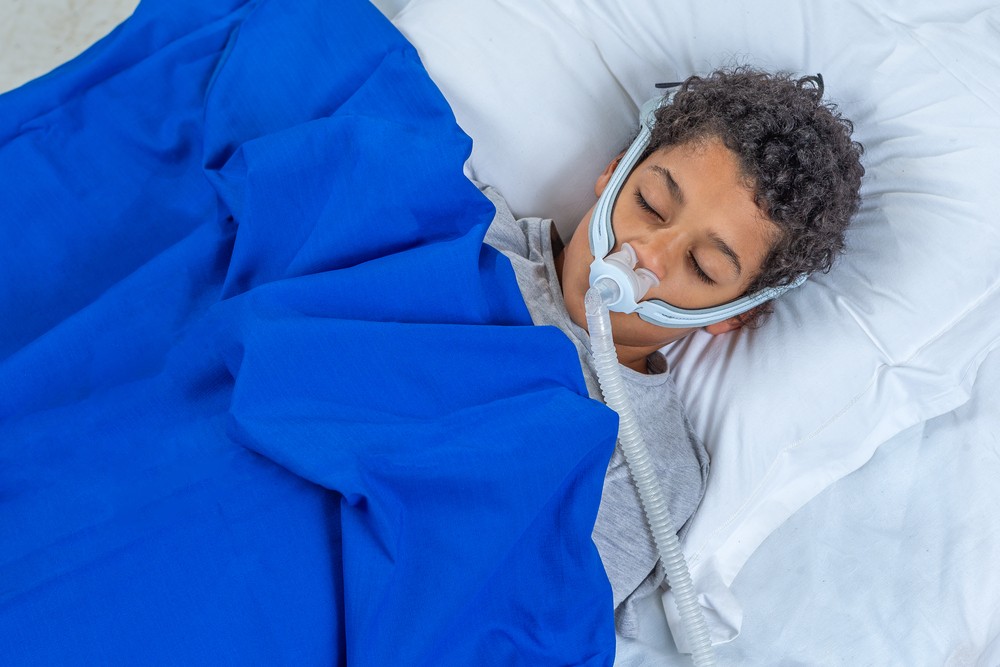
If you’re living with sleep apnea but don’t experience loud snoring—it’s still crucial to address this condition. Aside from snoring, sleep apnea manifests in different ways, such as daytime drowsiness, mood changes, and shortness of breath. Don’t worry; there are practical steps you can take to improve your situation.
Improving your lifestyle: Start with simple adjustments like losing weight, if necessary, as being overweight directly impacts sleep apnea. Next, ensure you follow a regular exercise regimen to improve overall health. Remember that even children can experience sleep apnea, so it’s essential to adopt these healthy habits early on.
- Sleep on your side: Instead of lying on your back, try side-sleeping. This position helps to prevent airway collapses and promotes better sleep quality.
- Establish bedtime routines: Preparing for sleep with relaxing activities like reading or taking a warm bath can help create a calming sleep environment.
- Limit stimulants: Avoid consuming caffeine, alcohol, or smoking close to bedtime, as they can potentially worsen sleep apnea symptoms.
One key takeaway: Stay committed to your lifestyle changes. It’s not easy, but progress takes time.
Work with your healthcare provider: Monitor your symptoms and any progress made with your lifestyle changes. If you still struggle with sleep apnea-related issues like daytime drowsiness or mood swings, consult a professional. They might recommend a sleep test to assess the severity of your condition.
Finding support: Living with sleep apnea can be emotionally challenging, particularly because it affects your daily life. Surround yourself with a supportive community—whether through support groups, friends, or family—and share your experiences. Remember, you’re not alone.
To sum it up, keep in mind that simple lifestyle changes can make a significant impact on your sleep apnea symptoms. While this journey may be challenging, don’t be afraid to seek professional help and involve your loved ones for support.
Signs You Need Medical Help
If you’re experiencing persistent symptoms that could indicate sleep apnea, it’s crucial not to ignore them. The following signs warrant a visit to a healthcare provider for a proper diagnosis:
- Excessive daytime sleepiness
- Morning headaches
- Mood swings or irritability
- Lack of focus or memory issues
- Pauses in breathing observed by a partner
- Chronic fatigue, despite seemingly adequate sleep
Remember, sleep apnea isn’t just about snoring. If you or a loved one notice these signs, especially in combination, seek medical advice for diagnosis and treatment.
Goals and Monitoring Progress
Once you know the potential issue, setting goals and tracking progress becomes essential in managing sleep apnea effectively. Here’s how:
Goals
- Achieve uninterrupted, restorative sleep
- Improve daytime alertness and mood
- Reduce or eliminate apnea episodes
Monitoring Progress
- Use a sleep tracker to document episodes and sleep quality.
- Keep a sleep diary to note how you feel each morning and throughout the day.
- Regularly consult with healthcare providers to review treatment efficacy and adjust as needed.
Treating sleep apnea is a collaborative process involving you, your loved ones, and your healthcare team. By understanding the signs, setting goals, and monitoring your progress, you can work together to improve your quality of life and reduce health risks associated with untreated sleep apnea.
Frequently Asked Questions

Is mild sleep apnea harmful?
Although mild sleep apnea may not seem as severe, it can still harm your health. Left untreated, it may lead to complications such as daytime fatigue, high blood pressure, and heart problems. It’s important to consult with a healthcare professional to discuss your symptoms and potential treatment options.
What are the common symptoms of central sleep apnea?
Central sleep apnea is a different type of sleep apnea with symptoms like:
- Abrupt awakenings accompanied by shortness of breath
- Difficulty staying asleep (insomnia)
- Excessive daytime sleepiness
- Chest pain at night
- Snoring
- Difficulty concentrating during the day
- Mood changes, such as irritability or depression
If you suspect you have central sleep apnea, consult a healthcare professional for evaluation.
What are the different types of sleep apnea?
There are three main types of sleep apnea:
- Obstructive sleep apnea (OSA): the most common, caused by a blockage of the airway during sleep.
- Central sleep apnea (CSA): less common, caused by the brain failing to signal your muscles to breathe.
- Complex sleep apnea syndrome is also known as treatment-emergent central sleep apnea, a combination of obstructive and central sleep apnea.
What is the life expectancy with untreated sleep apnea?
Untreated sleep apnea can significantly impact your life expectancy. It increases the risk of severe health complications such as high blood pressure, heart problems, stroke, and sudden death. The exact impact on life expectancy varies from person to person, but seeking treatment is crucial for improving your overall health and quality of life.
Can a thin person have sleep apnea?
Yes, even thin people can have sleep apnea. While obesity is a common risk factor for sleep apnea, it can also affect individuals with a normal body mass index (BMI). Factors such as age, family history, and anatomical features, like a narrow airway, larger-than-average tongue, or enlarged tonsils, can contribute to sleep apnea in thin people.
How can I test myself for sleep apnea?
Testing for sleep apnea typically involves a sleep study, which should be conducted under the supervision of a healthcare professional. You may be able to use an at-home sleep apnea test, but following a medical professional’s guidance is essential. If you suspect you have sleep apnea, consult a healthcare provider to discuss your symptoms and testing options.
- 7 Ideas to Help You Relax and Unwind on a Family Vacation - April 27, 2025
- How Having Cybersecurity Protection Helps You Relax - April 25, 2025
- 8 Reasons Why Spending Time Outside Calms You Down - April 25, 2025
This site contains affiliate links to products. We will receive a commission for purchases made through these links.

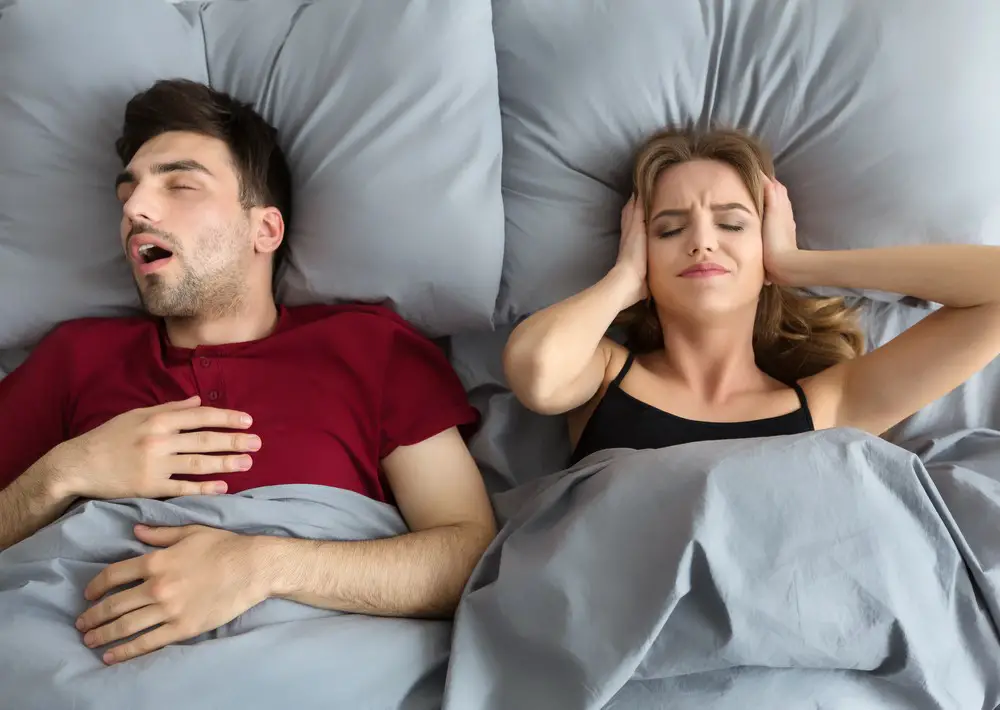
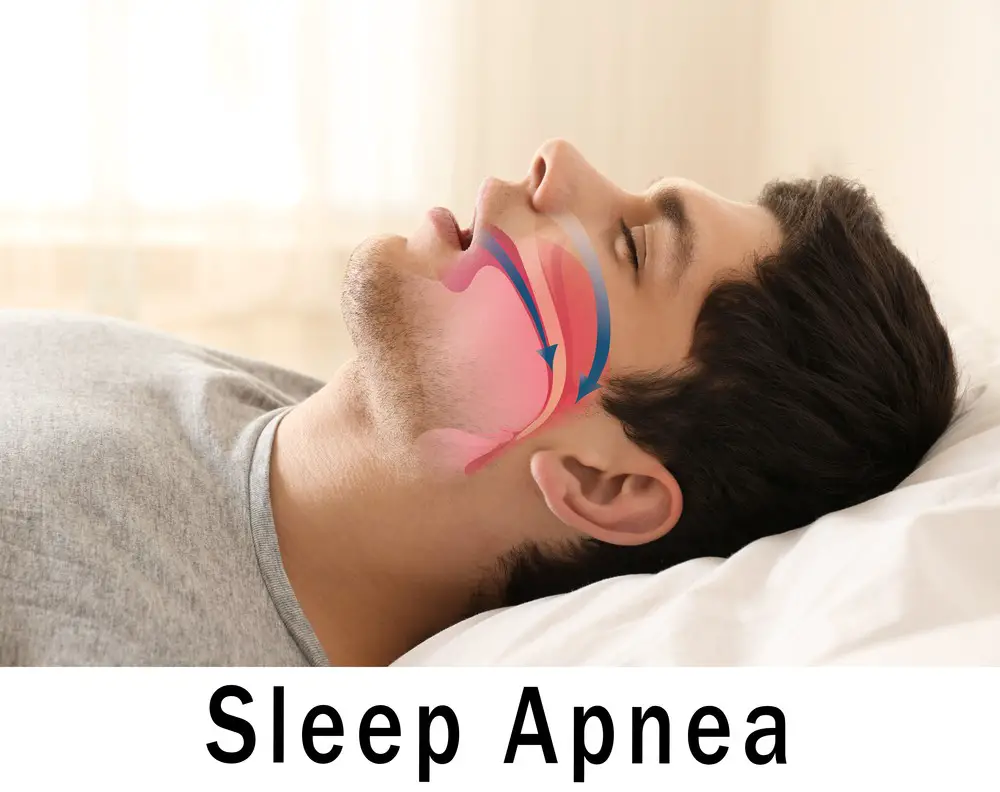 Understanding Sleep Apnea
Understanding Sleep Apnea